
Chlorophyceae

This is the Largest Class.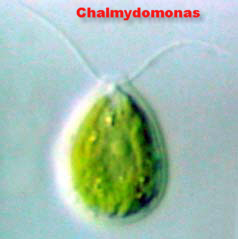
Cup-shaped Chloroplasts are Common.
An Eyespot (Stigma) is frequently present.
Chloroplast shapes can vary considerably, however.
Individual Chloroplasts may be interconnected.
Pyrenoids
are present. These appear to be areas where starch is produced. Pyrenoids also contain a
high 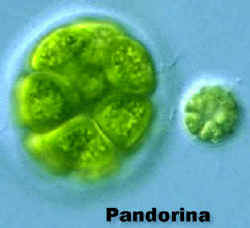 concentration
of RUBISCO. They are consequently thought to be adapted for Carbon fixation at low CO2
levels.
concentration
of RUBISCO. They are consequently thought to be adapted for Carbon fixation at low CO2
levels.
There are at least Three Distinct Groups in the Chlorophyceae
A] Volvocine = Motile
B] Trichocine = NONMotile & Filamentous
C] Chlorococcine
= NONMotile & NONFilamentous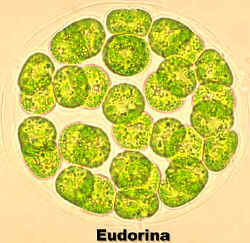
Volvocine Group
All members are flagellated.
Chlamydomonas represents a "basal" organism from which the group may have evolved.
A series of Colonial forms exists.
Each cell resembles Chlamydomonas.
The cells may be
embedded in a gelatinous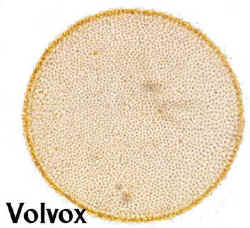 matrix.
matrix.
Cells are interconnected by cytoplasmic strands.
The number of cells produced by different species is constant.
The Ratio of reproductive to vegetative cells is also constant for a particular species.
Volvox
represents the pinnacle of this 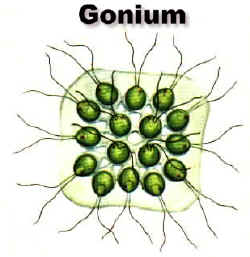 group. It has a low ratio of reproductive to vegetative
cells. However, all of the cells in Gonium, become reproductive.
group. It has a low ratio of reproductive to vegetative
cells. However, all of the cells in Gonium, become reproductive.
The trend is towards an increase in the number of cells as well as a trend towards cell specialization with most cells specialized for Photosynthesis.